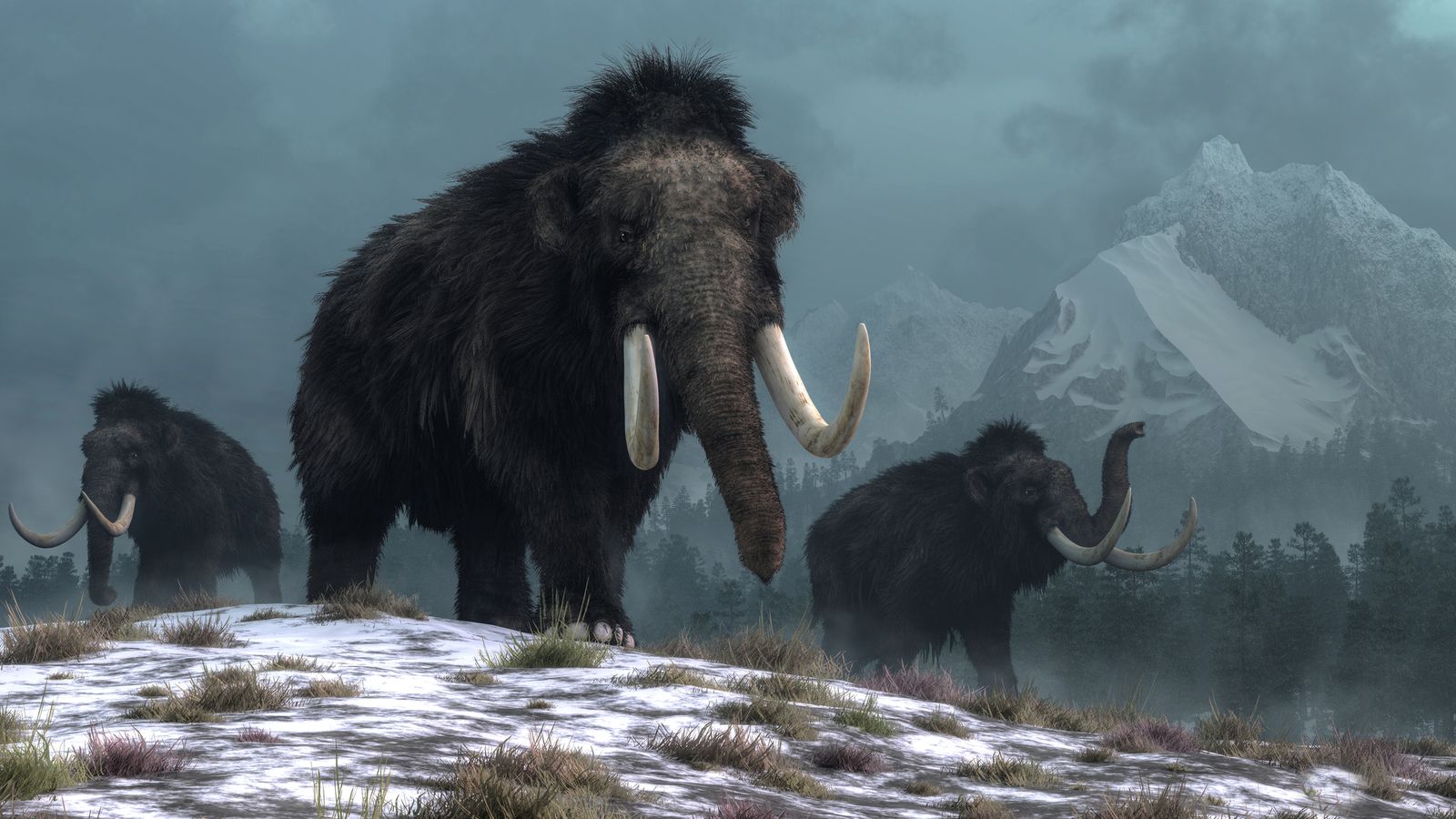Woolly mammoths could be “resurrected” within six years as part of a genetic engineering project trying to reverse extinction.
The animals that roamed the Arctic were wiped out about 4,000 years ago – but a firm partnering with a renowned Harvard geneticist has raised $15m to try to bring them back.
Colossal’s “de-extinction” project aims to slow or even halt the effects of climate change by developing a working model for restoring damaged or lost ecosystems.
The DNA sequences of woolly mammoths collected from well-preserved remains in the permafrost and frozen steppes will be inserted into the genome of Asian elephants to create an “elephant-mammoth hybrid”.
The animal will be genetically engineered with traits to help it survive in the Arctic.
This is expected to be successful partly because Asian elephants and woolly mammoths share a 99.6% similar DNA makeup, according to Colossal.
The DNA of woolly mammoths has been extracted from parts of mammoth tusks, bones, teeth and hair that scientists have spent years recovering.
Badger cull: Thousands to be put down in seven new areas across England as government battles bovine TB
Leopard attacks model during photoshoot inside big cat enclosure in Germany
‘Scrotum frogs’ go on display at British zoo as part of efforts to save endangered species
Colossal told National Geographic that the first hybrid calf is expected in six years, while a self-sustaining herd could take decades.
Ben Lamm, the company’s chief executive and an emerging technology entrepreneur, said: “Never before has humanity been able to harness the power of this technology to rebuild ecosystems, heal our Earth and preserve its future through the repopulation of extinct animals.”
He said Colossal will be able to bring back ancient extinct species and use their technologies to help preserve critically endangered species that are on the verge of extinction.
The company will “restore animals where humankind has had a hand in their demise”, he added.
Colossal said resurrecting the beasts could revitalise the Arctic grasslands, which play a role in combatting climate change by capturing and storing carbon and controlling methane in the atmosphere.
Professor George Church, the geneticist at Harvard University who co-founded the company, plans to use a Nobel prize-winning gene-editing technology called CRISPR, which he pioneered.
Please use Chrome browser for a more accessible video player
:: Subscribe to ClimateCast on Spotify, Apple Podcasts, or Spreaker.
CRISPR allows scientists to alter DNA sequences and tweak gene function for purposes such as correcting genetic defects or making crops more resilient.
“Technologies discovered in pursuit of this grand vision – a living, walking proxy of a woolly mammoth – could create very significant opportunities in conservation and beyond,” he said.
The cold-resistant herbivores were once hunted by early humans, who ate their meat and used their tusks and bones as tools.
Watch the Daily Climate Show at 6.30pm Monday to Friday on Sky News, the Sky News website and app, on YouTube and Twitter.
The show investigates how global warming is changing our landscape and highlights solutions to the crisis.






















